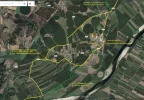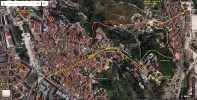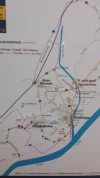Hi, I am planning to commence my Camino Portugues walk by myself from Santarem quite soon, but am a bit concerned about navigation. While I have managed Aumont-Aubrac to Conques in France without any problems, and without using any map at all, I have a feeling that the southern part of the Camino Portugues (internal) is a different story because:
(1) I have no sense of direction and very limited self-navigation experience;
(2) John Brierley warned that the first section of this camino (Lisbon-Porto) is open for 'seasoned pilgrims', which I can't claim to be;
(3) the super simplified maps in the Brierley book bear little resemblance to the roads / trails that I see in real maps;
(4) some people on this forum have reported that the yellow arrows - even on the supposedly well-marked section from Porto onwards - have from time to time pointed them in exactly the wrong direction!
So my questions are:
1. On which parts of the trail from Santarem (say, up to Coimbra) would I find misleading arrows or even the absence of arrows altogether?
2. Leaving aside those parts where the arrows are known to be wrong, is it safe to rely on the waymarkings without using any map or compass?
3. I do have a GPS app on my phone, which has proved useful on some of the short day hikes which I have done on my own in France. Would this be enough?
Grateful for any advice from those who have walked this part of the camino, especially if done recently. Thanks!
(1) I have no sense of direction and very limited self-navigation experience;
(2) John Brierley warned that the first section of this camino (Lisbon-Porto) is open for 'seasoned pilgrims', which I can't claim to be;
(3) the super simplified maps in the Brierley book bear little resemblance to the roads / trails that I see in real maps;
(4) some people on this forum have reported that the yellow arrows - even on the supposedly well-marked section from Porto onwards - have from time to time pointed them in exactly the wrong direction!
So my questions are:
1. On which parts of the trail from Santarem (say, up to Coimbra) would I find misleading arrows or even the absence of arrows altogether?
2. Leaving aside those parts where the arrows are known to be wrong, is it safe to rely on the waymarkings without using any map or compass?
3. I do have a GPS app on my phone, which has proved useful on some of the short day hikes which I have done on my own in France. Would this be enough?
Grateful for any advice from those who have walked this part of the camino, especially if done recently. Thanks!






















